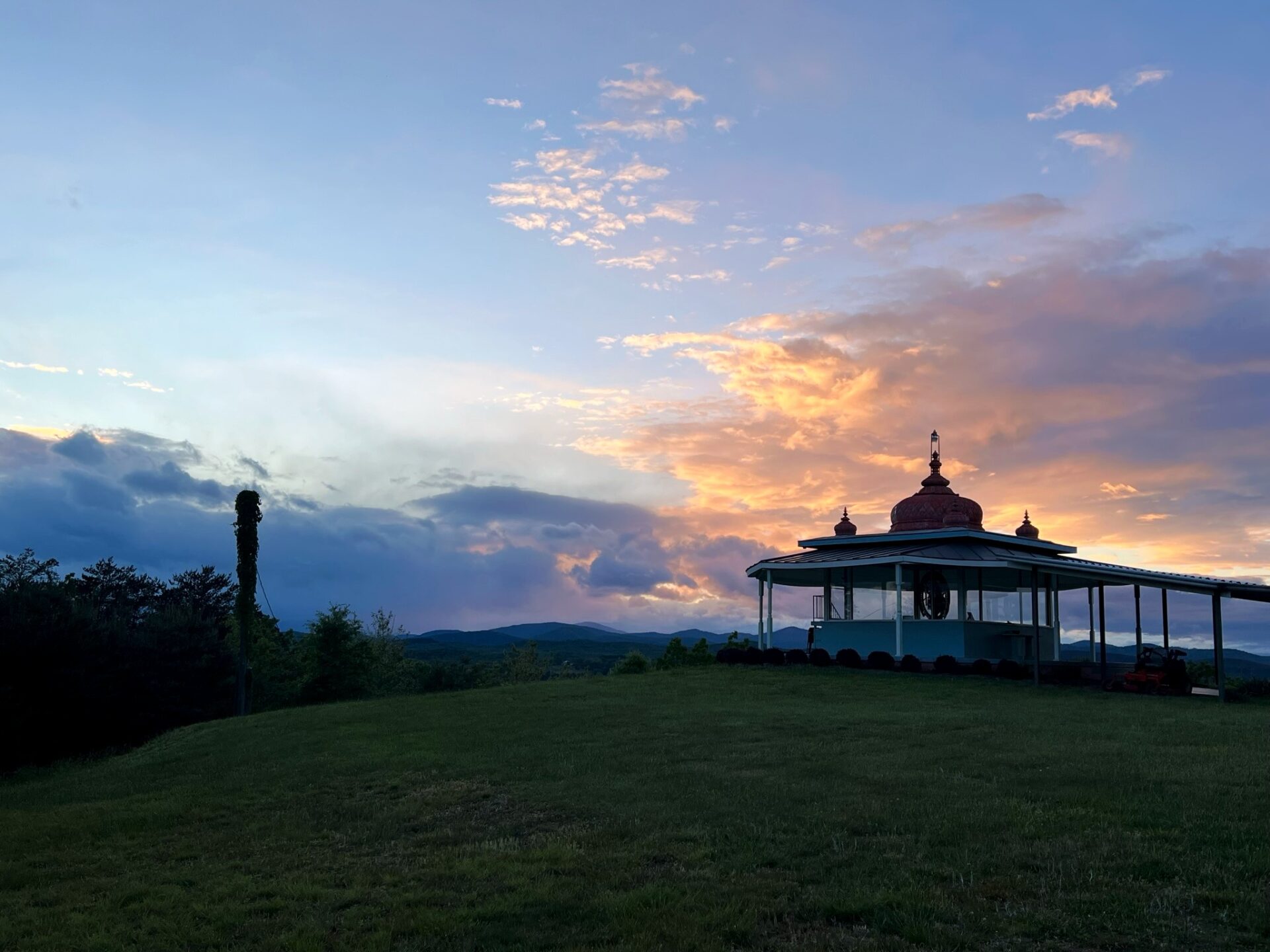
The Christmas before COVID, my parents gifted me a certificate to stay at Yogaville in Virginia. A large ashram located just an hour outside of Charlottesville, in Buckingham, the idea of heading off into the peace of the Blue Ridge Mountains to do yoga was an intractable pull. I couldn’t wait.
Of course, then Yogaville closed during the pandemic. Given the tight-knit community of varying ages that live in constant contact with each other, they were very slow to reopen. Just this spring, they brought back their personal retreats.
So at a time when life had slowed down enough to allow it, I booked two nights in the shared dormitory on a personal retreat at Yogaville.
But it didn’t go as planned. Surprising myself, I left early. There was something about the experience which didn’t fit.
Back at home, puzzling over this, and (quite honestly) beating myself up over the fact that I gave up and returned home, I began to process what I felt and saw. The more I dug into all of it post-trip (my experience, the history of Yogaville, what others have experienced), the more bizarre (and complicated) it got.
Eventually, the former journalist in me became absolutely fascinated with what I was learning. What I learned helped me understand why the experience I had was what it was.
(Side Note: I can’t believe that someone hasn’t made a Netflix documentary on all of this. So to help them get started, here is my first stab at an account of Yogaville all in one spot. Email me for the screen rights or to discuss a deal. xo)
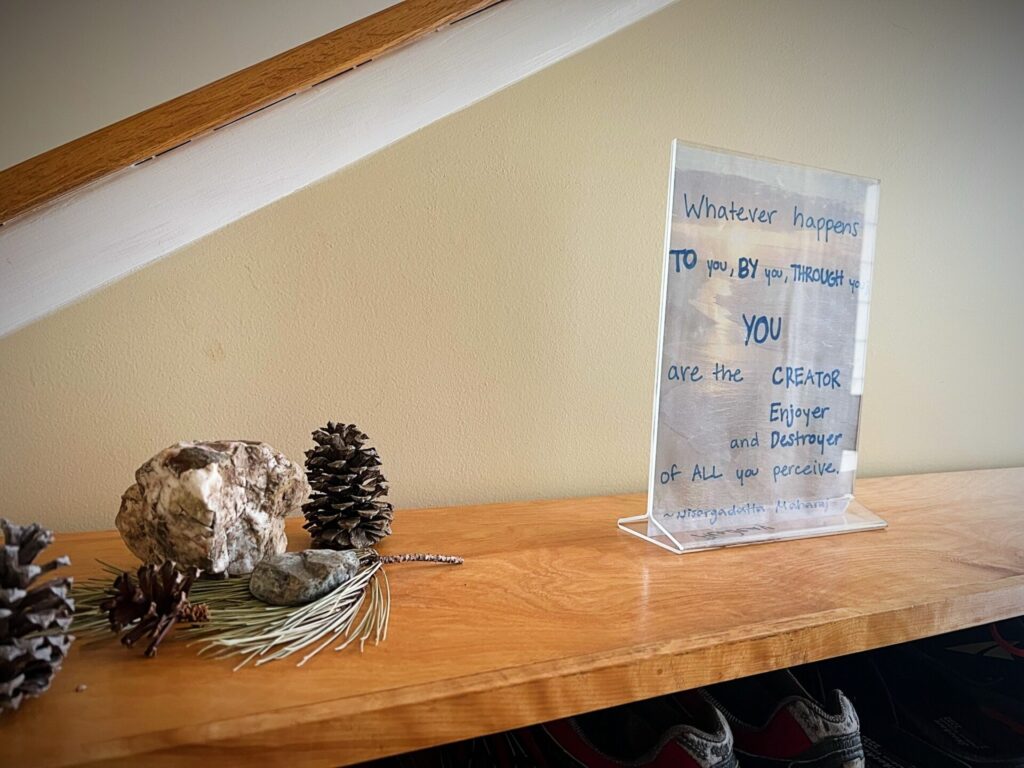
Table of Contents
What is Yogaville?
Yogaville does a great job of summing up what they are, and what to expect:
Satchidananda Ashram–Yogaville, Inc. ®, located in Virginia, is a peaceful environment for residents, guests and program participants who wish to study, practice and share the Integral Yoga teachings of Sri Swami Satchidananda. It also serves as the international headquarters for the Integral Yoga Institutes and Centers worldwide. Situated on 750 acres of land, its facilities include a teaching academy, conference center, meeting and dining hall, library, office building, maintenance & service center, organic farm, monastery, guest accommodations, and sacred sites for prayer and meditation. At the heart of Yogaville is the Light Of Truth Universal Shrine (LOTUS), dedicated to world peace and interfaith harmony.
But that feels like a simplification, too. It is also far more than that.
This ashram was built by and around the powerful personality and influence of Swami Satchidananda.
Satchidananda catapulted to fame as the “Woodstock guru.” This man, brought to America by followers including filmmaker Conrad Rooks and influential pop artist Peter Max, gave the opening remarks at Woodstock. The rest, as they say, is history. On the heels of his Woodstock exposure, he opened his first yoga institute in San Francisco in the early ’70s (of course, right?).
Satchidananda was born in 1914 and died at the age of 87, in 2002. And the man was complicated.
He believed in interfaith truth, and his entire ashram was founded on his teachings that sought to synthesize many of the major world religions. He traveled the globe and received awards for his humanitarian work. He worked with orphaned children but had left his own children back in India decades ago. He founded a yoga program for those incarcerated but was also accused of sexually abusing over a dozen women. He opened some of the first vegetarian stores in the U.S., yet also spoke about wellness and healthy eating to manufacturers of processed foods (like potato flakes). There is a movie about his life made by his followers, in which Dr. Oz gives testimony, and the trailer alone leaves one with the sense that this swami was treated with something closer to rockstar status than anything.
Satchidananda was complicated. Yogaville was what he left behind.
It has a history that is full of drama and intrigue, it has a present that is trying to continue the practice of what Satchidananda taught, yet, after spending some time there myself and researching for this article, I am not sure what its future is.
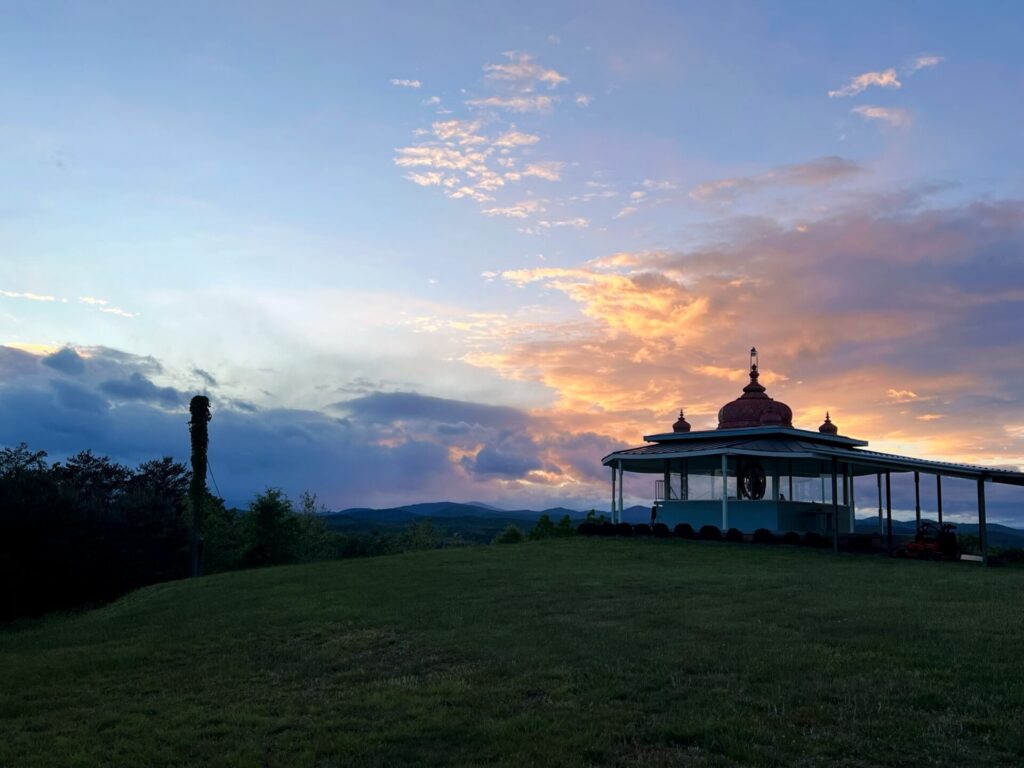
Yogaville and its Praises: What There is to Love
So many travelers have made their way to this yoga community nestled in the mountains throughout the years. So many have loved it and many return. (This article featuring firsthand accounts from a visitor and a resident is a quick read that sums up most of the sentiments praising Yogaville.)
One Washington Post article from 2014 goes so far as to call Yogaville a “nirvana.” (Although I noted when reading this article that none of this mirrored my recent experience: from the violin wake up call to the coffee shack down the road to the bookshop to the greenhouse… none of that was present when I went.)
With 89 reviews on TripAdvisor, Yogaville has a very high rating. Most comment on the peacefulness of the place. But again, it caught my eye that the reviews predate the COVID pandemic, the last one from February 2020. (As I’ll mention later, this may be indicative of what is happening at Yogaville at the time I experienced it, post-pandemic.)
Everyone comes to Yogaville for a different reason.
I had the honor of meeting three unique and beautiful ladies while I was there. We walked to the shrine one evening to take in the colorful sunset. As we strolled, we talked. Each had a very different reason for attending: loss of a relationship, an empty nest for the first time, a job that was too mentally exhausting to be healthy.
This article on NPR from 2009 (which is horribly titled “Broke And Jobless? There’s Always Yogaville”) does a good job capturing some of the other reasons people find the ashram. But this reporter focuses on the fact that Yogaville is really, really cheap! The reporter also mentioned the Living Yoga Training (LYT) program, which remains a popular program today.
HGTV lists Yogaville as a top 10 transformative destination in the U.S. And one of the most lovely reports out of Yogaville is a piece written by Diana Morgan for The Washingtonian.
I begin the retreat neither sure of my purpose nor how I can serve. Over the next six days, I cast my mind back over the years raising kids and further back to values instilled in my childhood. When Kennedy gave his inaugural address, I was learning to talk. He ushered in an era in which baby boomers like me were lavished with a degree of prosperity unknown to our parents and grandparents, who had struggled through two world wars and the Depression. Rumbling beneath it was our parents’ self-doubt: Who were they—and we their children—to enjoy such riches? Here I am now, marking half a century, not sure what comes next. I turn over in my mind the question of how I was able to raise kids to have a sense of meaning and purpose when, like Yuuki, I’ve never been entirely sure of my own path. Yet Ralli somehow has a work ethic and moral compass to match those of her Pilgrim forefathers.
Diana V Morgan
All of those experiences, which are the ones easily found on the Internet, seem to capture the Yogaville experience at a very specific time: after the guru’s death yet before the pandemic.
Also, it struck me that many of these visitors were in planned and scheduled yoga programs, which Yogaville offers many of, but not in the personal retreat program. I wonder how my experience at Yogaville would have landed differently if I had made different choices?
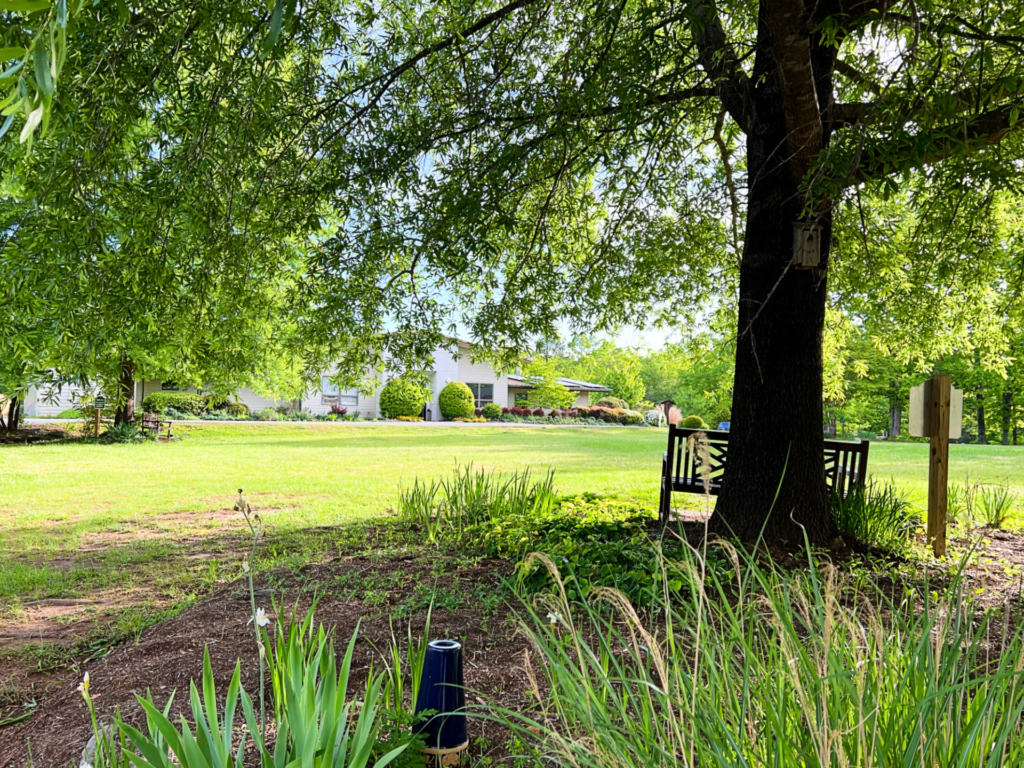
Yogaville and Pop Culture: Musicians and Tiger King
Back home from my retreat, I began to research, to answer some questions I had about what I saw. I was trying to understand what this all was, and what it was trying to be.
Immediately, it became evident that there is a wild history at Yogaville.
I learned there are quite a few famous people who grew up in the ashram under the swami, some when Yogaville was located in Connecticut (where it was prior to moving to its current location in Buckingham, VA).
Rivers Cuomo from the band Weezer, the bassist from the Dave Matthews Band, and X-Man villain Liev Schreiber, all attended school at the ashram under the swami and lived there for a few years.
But what really catapulted Yogaville into pop culture was the Netflix show Tiger King (the now-famous real-life saga that nearly all of America binged together during the COVID pandemic).
Doc Antle, one of the main “characters” and the subject of the second season of Tiger King, lived at Yogaville and reportedly had a tight relationship with Satchidananda. There are pictures, apparently gathered from the famous guru’s Facebook page (not a typo) from the ’80s featuring the guru with Antle’s tigers nestled in his lap. Integral yoga, the name of Sathcidananda’s yoga philosophy, was what Antle claimed allowed him to have a relationship with big game cats. Yet the end of this idyllic relationship between Antle’s animal zoo and the swami ended bizarrely.
911 Animal Abuse suggests Antle fled the property in December 1989, leaving behind peacocks and deer. A 1990 article in The Tennessean recounts an earlier incident in which a visitor named Clint Baron had his hand mauled by a tiger—Baron filed and then withdrew a lawsuit. Louis remembers that at one point an employee was “clawed by a bear.”
Ben Hitchcock
Writing in an article for Bustle in 2021, Gretchen Small hypothesizes that Antle’s hero-worship of the flawed Swami Satchidananda may have contributed to the abusiveness Antle displayed in his life, particularly toward women.
(Alas, the original Rolling Stone article on Antle from 2015 that seems to have been the impetus for the Tiger King creation is behind a paywall.)
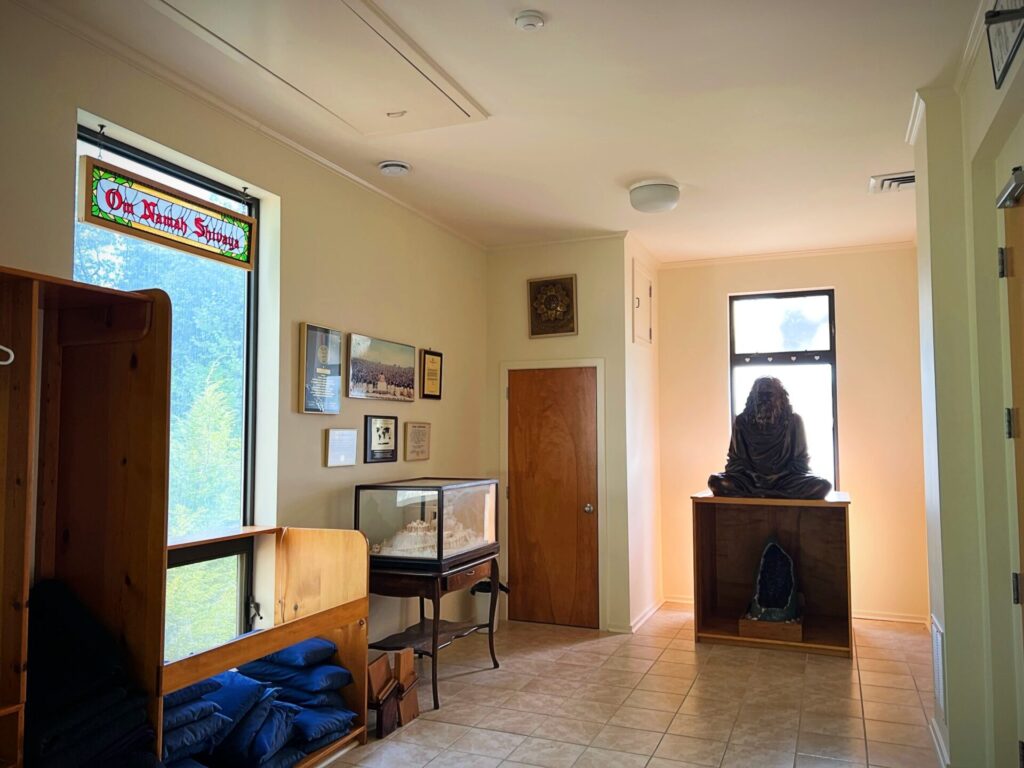
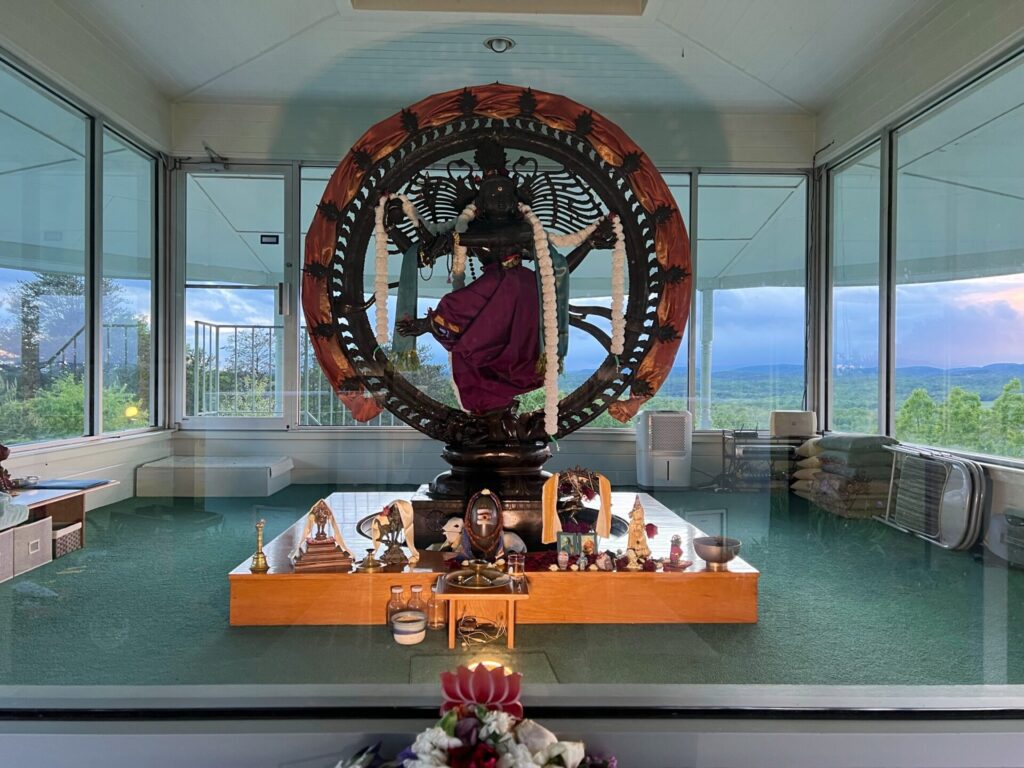
Is Yogaville a Cult?
This question is asked a lot.
There are a few threads on the Internet, with quite a few comments, asking if Yogaville is a cult (like this and this and this). There is a two-part podcast on this topic, the Cult Podcast, that I am definitely not recommending.(There are excessive swear words and it is incredibly crude.)
Culteducation.com, founded and run by a man who has his own fair share of controversy (for wrongful imprisonment), includes Yogaville and warns about it on their site.
Most people who have visited Yogaville don’t see or experience anything cult-like about Yogaville. But there are enough people who feel differently that the question is asked and revisited, a lot.
For example, there is one family who, for some time, loudly shared their belief that their law school daughter was recruited by the Yogaville cult. They write a fascinating first-person account (on culteducation.com) with many unanswered questions. The brother of the woman reportedly brainwashed seems to have been motivated to buy all URLs related to Yogaville and Integral Yoga in retaliation (this was in the late ’90s/early 2000s). On these websites, he allegedly posted warnings about Yogaville being a cult. It seems Yogaville sued him – the lawyer representing Yogaville being the man who married the supposedly brainwashed woman. (Random deep Internet post here.)
One thread I found from a woman who had stayed at Yogaville later claimed to sit at lunch with that same attorney, who supposedly had been banned from Yogaville due to his connection to a missing persons case. (WHAT IS GOING ON?!)
It is so hard to tell, as Yogaville is expectedly quiet about everything today and much seems to be lost or inaccessible, what is real any more? Yes, personal stories and experiences can not be denied. But the actual facts are really ambiguous today. (We need some good Serial podcast sleuthing.) What seems strangest to me, as a former journalist, is how buried everything is. I can’t help but wonder if that is intentional?
There are clear references, even outside of the controversial culteducation.com website, to public statements and legal actions that are simply missing from the Internet.
But back to the question at hand:
After spending some time there, I personally didn’t feel as though it was a cult. Or, if it was, they certainly weren’t interested in recruiting me!
I didn’t feel I fit in (more on that below), but I also didn’t feel judged, claimed, or in any way sermonized to. In fact, it seemed the opposite. I felt there was a lack of any leadership or teaching at all (again, more below).
Swami Satchidananda and Sexual Abuse Allegations
At this point, you may not be surprised to learn that Swami Satchidananda found himself embroiled in accusations of sexual molestation and sexual abuse. Yoga as an industry was critically reviewed during the rise of the #MeToo movement as more and more yoga students began to come forward with tales of sexual abuse and assault at the hands of yoga instructors.
But, it is worth noting, protests by women against Satchidananda started decades prior to the #MeToo movement. In 1991, a group of women organized a protest around “Stop the Abuse” in response to Satchidananda’s appearance at a symposium. Charges were never brought against him. But it was a deep controversy and accusation that had far-reaching tentacles and was never resolved.
A Yoga Journal issue published an update on the accusations back in the ’90s, and the women making public statements about their experiences with the swami had started an organization to offer support to those who had also suffered. Their stories resonated and, clearly, they found many who had similar experiences.
Satchidananda was mentioned in later reporting on the topic of yoga masters and sexual abuse in a variety of major newspapers and news outlets, but, as far as I can tell, no investigative journalist turned their attention directly toward him, nor were the allegations mentioned in his obituaries. However, many women, unrelated to one another, were adamant throughout the years that what they experienced was unwanted sexual contact.
Devotees defended him passionately and it is hard to know if Yogaville suffered in any way. Of course, they don’t have a public statement on any of this available today, and references to this history is obviously not on their website. Yet their code of conduct offers clear rules about how they deal with unwanted behavior (involving a human resources department). A writer who had been taught by Satchidananda wrote in Elephant Journal (where I have also published, by way of full disclosure) a defense of the swami:
We live in a culture that always wants to throw the baby out with the bathwater. Many people, for example, couldn’t enjoy Chris Brown’s singing at the recent Grammy’s because of his personal-life behavior, even though his voice was lovely. But my experience with that early yoga scandal convinced me that we can appreciate what we get from a person even though they prove to be an imperfect messenger.
Meryl Davids Landau
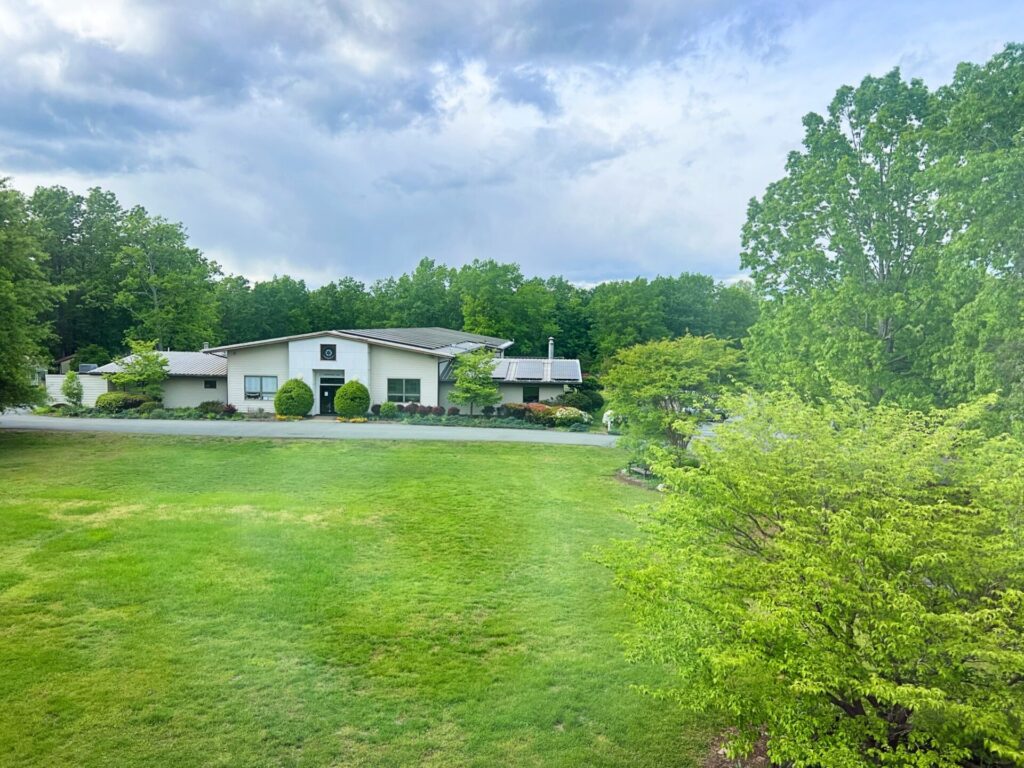
What It's Like to Visit Yogaville Today: The Strange Role of a Guru
As you may recall, I am a certified yoga teacher who loves yoga (writing an ultimate guide to yoga practice here). I currently teach Vinyasa Flow and practice Bikram. I have been to yoga festivals and my own self-created yoga retreat. So I was ready for a restorative experience with yoga and meditation after a particularly demanding few months at my job.
But, despite my enthusiasm and my intentions, this didn’t hit the mark for me.
I didn’t mind the lodging. It was sparse and dated, but clean and comfortable. I had one roommate in my shared dorm room and she was lovely.
Heading back to a shared dorm room, though, is a bit of a strange experience as a 40+ year old woman. The challenge came during the huge gaps in time in which there was literally nothing to do at Yogaville. Those blocks of free time would have been perfect for napping or reading or writing, except that I didn’t feel I had a private space of my own. I felt untethered and without a place to hunker down and “do the work.”
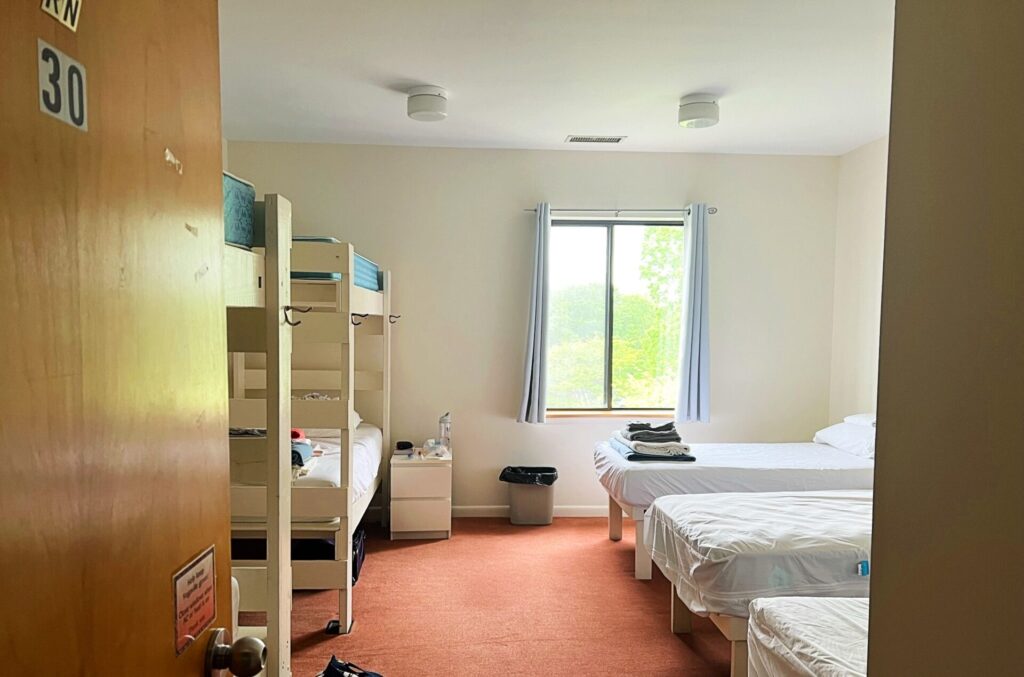
I found everyone at Yogaville incredibly nice, even friendly. There was an openness and authenticity that was simply beautiful. I wish all humans lived with the same vulnerability and kindness I experienced at Yogaville while there.
Also, while the food was vegetarian, I loved it. Granted, on Thursday they “encourage fasting” so the food choices were sparse that day. But the plethora of fresh fruits, healthy grains, and all varieties of herbal tea was welcome to me. I enjoyed meal times.
But what didn’t work for me was the emptiness. There was a lack of guidance, a lack of opportunities, a lack of communication, and even a lack of yoga. I found the rules of conduct and appropriate clothing requirements to be stressful. (No yoga leggings if you didn’t have a tunic down to the knees, for example.)
To be clear: this is not a yoga retreat. Today, Yogaville feels more like a convent or monastery experience. Visitors should expect the stripping away of worldly vices and attachments to focus on their inner dialogue – while still being comfortable. There is no alcohol and no caffeine (while there is a coffee shop on the grounds at Yogaville, the hours are short and it opens after lunch during the weekdays, which is not helpful if, like me, you savor your first morning cup of coffee). There is no meat, no dairy. One of the women I met during my stay was treating her time at Yogaville akin to rehab as she felt she had been drinking too much.
But while I wasn’t expecting a fully guided retreat, I was expecting opportunities. While at Yogaville, I never took a yoga class. The schedule had one class first thing in the morning, when the sun rises (which, given I was looking to restore myself, I did not want to do) and then in the evenings (which I couldn’t get to in time for my first night there). That’s it by way of yoga if you are on a personal retreat. If you are doing an actual program that Yogaville puts together, I believe participants in those have more classes.
There were many more meditation times. Unfortunately, while all the schedules said some of these times were guided, they were not. I settled myself on my bolster one evening in the meditation hall, ready for my guided meditation, but while other Yogaville residents came in to join, no one ever came to guide.
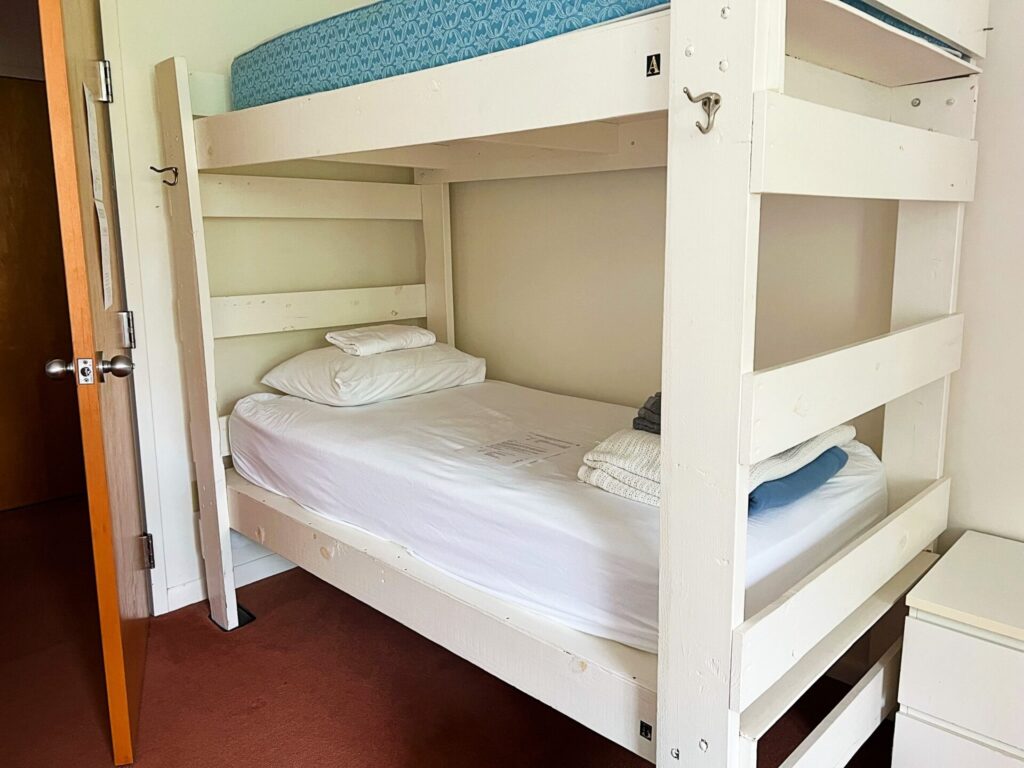
Overall, today I feel the main question Yogaville is trying to figure out is: who are they without their guru?
The place feels as though it is dying. One of the women staying at Yogaville at the time of my retreat had been many times, even living there for a few months pre-COVID, a time during which, she claims, Yogaville was still thriving. She pointed out the distribution center, which is now closed. She waved to houses and places that had held activities related to the yoga mecca, but all we could see now were phantoms of times gone past.
There isn’t a clear leader at Yogaville – how do you replace a guru? Yogaville was founded on the vision and personality of one man, who amassed a loyal following of people who were looking for something different out of life. But it turned out his vision was flawed, that he was flawed, and while no one wants to deny or remove the good that Satchidananda did, it also seems there is no appetite to carry on his legacy, either. What he offered was complicated and fraught with challenges (the treatment of women, the rules around teenagers, and what his role was in it all) as well as beauty. In the wake of his death, what is Yogaville?
There are paths to meander through the property. My intention was to hike them during the afternoon of my full-day stay. But, as it turns out, I hiked nearly all of it my first evening, the evening when the three women approached me at dinner and asked if I wanted to walk to the shrine that evening for sunset. We learned each other’s stories (what we wished to tell) and took off our shoes at the top of a windy hill. Dusty gifts were on the teal blue carpet around a shrine of … something… while folding chairs and filtration units lined the edges, held in storage next to an icon of supposedly religious significance. We watched the sun set quietly over a temple covered in scaffolding. We took a ride back to the ashram, where we all parted and were asleep in bed by 9:00 pm without further words or the exchange of contact information.
The next morning, when my full day began, realizing that the coffee café was closed, that there weren’t many places to be outside that allowed anything other than silent meditation, that my bunk bed was insufficient for sleeping or lounging, that there was no common space I could sit and journal, that I had explored all the paths, and that there wasn’t any programming until that evening… I felt lost. Quiet and solitude I can do. A feeling of being untethered and without purpose, I cannot. Especially when time is so rare and I can feel the seconds ticking away in the back of my throat every time I look at my kids.
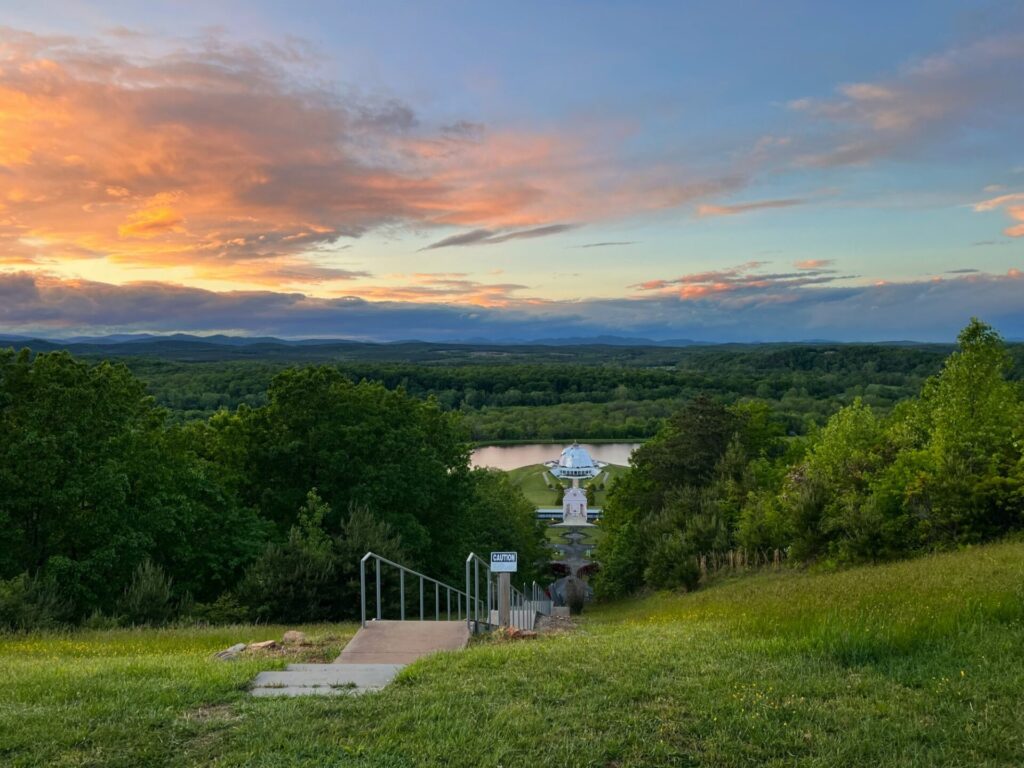
Obviously, there is a (good) chance that the state of Yogaville right now doesn’t have to do with the lack of a guru at all; maybe it is related to its COVID shutdown and the slowness they’ve had regaining speed and momentum.
The place has enough volunteers to keep it clean, but it isn’t moving into the future with any visible clarity. The LOTUS temple (the most photographed and noticeable feature of Yogaville) is covered in scaffolding and, as my new friend who had been there many times told me, it has been that way for a long time. Her ex-boyfriend had worked on that very project years ago. But he grew frustrated as there was no leader and the renovations and repairs were not moving forward with direction, she said.
Maybe that’s the best way to envision Yogaville. Maybe that is Yogaville now: a project without a leader or a clear vision?
That doesn’t mean visitors won’t have an experience meaningful to them. And it doesn’t mean that Yogaville has nothing to offer. It also may be a good thing that the path that Swami Satchidananda had Yogaville on (a vision of over 1,000 residents living in a complicated, confusing, controversial style on the banks of the James River in far-off Virginia) now looks different.
As Hatha Yoga, the vestige of Satchidananda, itself teaches:
Finally comes letting go and the insight that it is not you that lets go. Throughout practice, there was that vestige of self-consciousness that could take credit for the insight into impermanence, and cessation. The final thing to let go is the idea of a separate enduring self. The irony is that this is a letting go of what was never there! Letting go means to see through all that keeps us (falsely) separated from reality as it is. (source)
Other articles on the Internet About Yogaville
- NY Times Obituary
- 1995 WashPost article on religion in VA, with notes on Yogaville
- Chapter on Swami Satchidananda in Stripping the Gurus
- Blog post on a silent retreat at Yogaville
- Daily Item article on Yogavile more like a Convent
- 2013 blog post review on a retreat with the writer’s yoga studio
- 2016 blog post review of a Yogaville visit where the writer stayed in a local Airbnb
- 2013 blog post on the spiritual experience of Yogaville
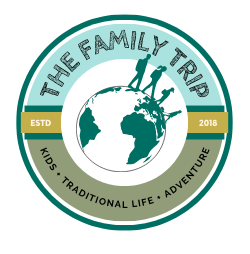
I was once a follower of Swami Satchidananda. The sexual abuse allegations were rampant long before in the late 1970’s early 1980’s and it was one woman after another. One, I might have dismissed as someone vindictive, but the volume of allegations is another story entirely.
I’ve been to the ashram once, it’s a beautiful location. I too, have non idea what the future would bring to the ashram. Every group, church, even the mainstream religions have a cult-like quality about them. One person’s religion, is another person’s cult. I know both devoted Catholics and those who had such toxic and horrific experience they have PTSD from having been part of the “church.”
That part … One person’s religion, is another person’s cult. Well said.
Yogaville offers 2 yoga classes and 3 meditatons daily. That is about 5 hours of spiritual practive. If one includes sleep, three meals a day and some walks, there is hardly any free unstructured time left. Sorry you left after one day.